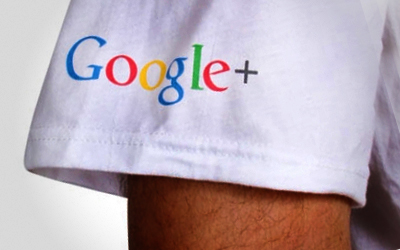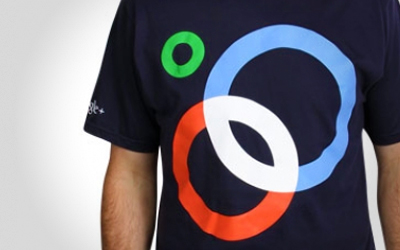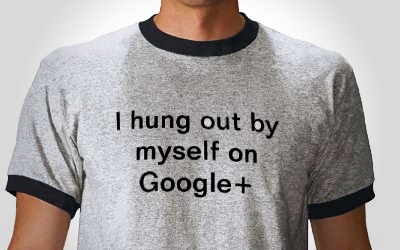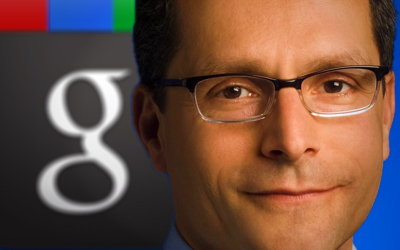Want smarter insights in your inbox? Sign up for our weekly newsletters to get only what matters to enterprise AI, data, and security leaders. Subscribe Now
 Over the past couple of weeks, the Internet’s frothy enthusiasm over Google+ has dried into proclamations of its imminent death.
Over the past couple of weeks, the Internet’s frothy enthusiasm over Google+ has dried into proclamations of its imminent death.
Social media experts and bloggers who were one month ago hailing the fledgling service as the second coming of Christ are now calling it a graveyard and a ghost town.
But from where Google executive Bradley Horowitz sits, in an office on the Google campus in Mountain View, the vista isn’t nearly so dire.
“I don’t blame the pundits,” he says, “they’re not privy to our long-term strategies.”
The comment may seem snide or passive-aggressive; it’s also true to some extent. To understand Google’s plans for Plus, Horowitz says, you need to listen less and watch more.
“Six months from now, it will become increasingly apparent what we’re doing with Google+,” he says with a measure of opacity. “It will be revealed less in what we say and more in the product launches we reveal week by week.”
Over the past couple of weeks, we have, in fact, been seeing Google+’s social features creep into other Google web products, including Reader and Blogger.
We were clued into the real scope of Google’s plans by Louis Gray, a relatively new employee of the company who is a product marketing manager for Google+. A few weeks ago, Gray gave us a glimpse at the long view: Plus isn’t a social network; it’s Google’s new way of getting you to use all its web products.
Now, Horowitz confirms that conception. As I explain to him the vision that Gray explained earlier to me, he says, “Directionally, the world you’re describing is the world we aspire to. And it will be much better than the current state for our users.”
What is Google+?
 Too many pundits and tech bloggers have made the mistake of thinking of Google+ as a Facebook competitor, but it’s absolutely not — at least not as far as Google is concerned.
Too many pundits and tech bloggers have made the mistake of thinking of Google+ as a Facebook competitor, but it’s absolutely not — at least not as far as Google is concerned.
Of course, Google is still in the business of competing with Facebook for ad dollars. That boils down to compiling the best, most actionable data about consumers to sell to advertisers.
And if Plus catches on, Google stands a much better chance of accomplishing that goal, not by orchestrating a Great Migration of users from one social network to another, but by subtly linking all your Google-powered online activity and profiles so advertisers can see a more complete picture of you than Facebook could ever offer.
But that’s just the follow-the-money part of the story of how Google is banking on staying in the black. As far as what you, the average end user, are expected to do to use Google+, there’s a lot less effort involved than you might think.
After all, Google is a company renowned for the massive collective brainpower of its workforce, and no one in that workforce really expected a billion people, give or take, to switch their online lives and relationships to a new destination.
Rather, Google+ is simply a new way of accessing Google’s web search. And Gmail. And Google Maps.
In other words, Google+ is (or soon will be) part of all of those products, rather than a standalone social network of its own.
“We think of Google+ as a mode of usage of Google,” says Horowitz, “a way of lighting up your Google experience as opposed to a new product. It’s something that takes time to appreciate, even internally. It’s easy to think of Google+ as something other than just Google, and I think it’ll take more launches before the world catches up with this understanding.”
Until the world does catch up, however, Google has to find its own metrics for success. Users are complaining they don’t see enough activity in their circles, that too few people are coming to Plus to hang out and interact.
Then again, if you buy into the idea that Plus isn’t, pardon the pun, a hangout or destination per se, you can accept the idea that Google+ could still be a success without massive amounts of public sharing and user activity.
Google gets holistic
 One part of Google+ that Horowitz says is essential at this point in Google’s lifecycle is the unification of account management and data.
One part of Google+ that Horowitz says is essential at this point in Google’s lifecycle is the unification of account management and data.
Simply put, right now you have separate profiles and logins for Blogger, Reader, YouTube and Gmail. That will soon end, to be replaced with a single account and a single login.
The multiple logins are complicated and can be confusing, and the only real reason for the disparity is because Google has evolved over the past 10 years as a many-limbed beast without a head.
Since its inception, Horowitz says, the company has placed a premium on autonomy and innovation, which, as a younger company, gives it a distinct competitive advantage.
“We have browsers, phones, self-driving cars, TVs,” he says, by way of illustrating how Google has invented better mousetraps in a variety of industries. “In many ways, these products have grown up very autonomously and have veered off in different directions, and it’s clear that we can now rationalize them and make them coherent and accretive to each other.”
While he praises the company’s culture and the diversity of its product suite, Horowitz concludes, “Now, for the user’s sake, we need to make improvements across all these products. … We were making a lot of bets in a lot of places, now we’re harvesting the bets that have paid off and weeding out the others. There’s an art to that which is greater than the sum of its parts. It’s a natural oscillation that is very user-focused.”
In the coming versions of the Internet as Google sees it, the company’s products are not disparate but holistic, and you, the average Joe or Jane, can comfortably and conveniently be a Google user with one account over multiple identities and multiple products.
“Right now, Google requires users to invest a lot of duplicative effort in all our products,” says Horowitz. For example, he tells me he’s getting married soon and will have to change his marital status across around nine different profiles for a lineup of products.
Instead, Google wants to let your profile and social graph move fluidly with you across your YouTube account, your blog, your email and wherever else you need that identity.
By contrast, Horowitz calls the current Google experience disconnected and haphazard.
“We think in providing this base level of infrastructure, it’s much less work,” says Horowitz. “Managing all these facets vanishes. The interfaces get very appealing and unified. You now have one coherent frame, and we can use these metaconcepts like circles to apply to how you share content across all that Google does.”
The freedom to be invisible
 But what about those of us who lurk, who don’t want to be social, who prefer a web of information rather than interpersonal connection?
But what about those of us who lurk, who don’t want to be social, who prefer a web of information rather than interpersonal connection?
I count myself in that number. When I search, I don’t want to see links my friends liked. When I look at a map, I don’t really care where others have gone.
I ask Horowitz whether Google+ as part of all Google products means that I would be forced to be “social” whenever I use any of Google web services.
“Certainly, some products like Google search will support ‘incognito’ mode,” he tells me, outlining the three ways I could use any web product: unidentified, identified or pseudonymous.
“All three modes have different values to the user and different product implications,” says Horowitz. “Not every product will support all three modes. Something like Google Checkout is the highest bar, where financial processes are involved. And there’s a spectrum in between. Some products make sense to support in multiple modes, and it’s sort of a product-by-product decision.”
Ultimately, Horowitz says, the company’s goal is to give you the freedom to be who you want or need to be in any given moment.
“Blogging, for instance … is an important service on the Internet. That’s one that warrants having pseudonymity and having support for those use cases,” he says.
The issue of handles or pseudonyms is at the crux of Google’s approach to profiles and identity. In Google+’s infancy, your “common name,” that is, the name your mama gave you, was the only identifier you were allowed to use for the product. Your “StonerGuy420” username from YouTube wasn’t going to cut it; the company was insisting on real names for “real” identities.
However, Google has shifted its stance on pseudonymity and will be allowing users to flow between anonymous, pseudonymous, and identified use of its products.
And as far as sharing is concerned, Google is deliberately making sharing a little more difficult than it is on other services. “We think in contrast to existing solutions, we want to give you clarity, transparency and choice,” Horowitz says.
“We’ve introduced friction into sharing quite deliberately. We want people to see, who gets this? Is this the right decision? We want to bring that cognitive load to the foreground … We want users to be thoughtful and deliberate about these things, and we’ve made that trade-off.”
Google responds to critics
 In the face of rampant criticism over waning usage of his product, Horowitz says, “I never thought I’d be sitting here after Halloween with the usage we have. It’s delightful; it’s an amazing situation.”
In the face of rampant criticism over waning usage of his product, Horowitz says, “I never thought I’d be sitting here after Halloween with the usage we have. It’s delightful; it’s an amazing situation.”
Is he reading the same Internet we’re reading?
A September study showed a 40 percent drop in public posting on Google+, while a widely circulated study from last month said that visits to the service peaked quickly then dropped by 60 percent.
Then there’s the anecdotal evidence: Users taking to Facebook and Twitter to throw stones at Plus.
But again, Horowitz et al. are not looking at the trees, a.k.a., public posts and hangout activity. They’re looking at the forest, and so far, they like what they see.
“When we look at engagement, we look at how often those users are coming back to Google, and they’re coming back all the time — for search, to look at maps, to read email,” Horowitz says.
“Our engagement is extremely high, and this isn’t rhetoric. This is going to manifest in the products themselves.”
The Google+ team isn’t too concerned with emotionally weighted keening from tech pundits. “It’s relatively easy to filter out the diatribes and rants,” says Horowitz. “What’s much more seductive are the accolades and the praise.”
In the service’s early days, after all, “We were lauded as the saviors of the open web,” Horowitz reminds us.
But now, he and the rest of the team choose to absorb words of praise and understand the relevant criticism. Horowitz here paraphrases a dictum from Google co-founder Sergei Brin: It’s not that you shouldn’t listen to what people say, you should also watch what they do.
“A lot of our decisions are based on the clickstream in addition to sentiment analysis,” Horowitz reveals. “You’ve got to have a little window for stuff to come in. You’ll miss a lot of great feedback if you slam the window shut.”
For example, Google originally required gender to be visible on users’ profiles for Google+, a decision Horowitz says was “a deliberate and pro-user choice” to make sure users had the best possible understanding of who was in a given space.
“What we heard back was that the right of users to decide for themselves trumped that need,” Horowitz says. “That came from a lot of user feedback, people said they didn’t want to share their gender with everyone. So we flopped and we reacted and we changed the product. If we had been tone-deaf, we wouldn’t have made that call.”
And as for the rest of the critics, Horowitz concludes our talk on an arch note: “Nothing I say is going to impact the immense curiosity about our products and the rampant speculation about our imminent success or failure. And that’s ok. We have a clear inner compass and long view.”


